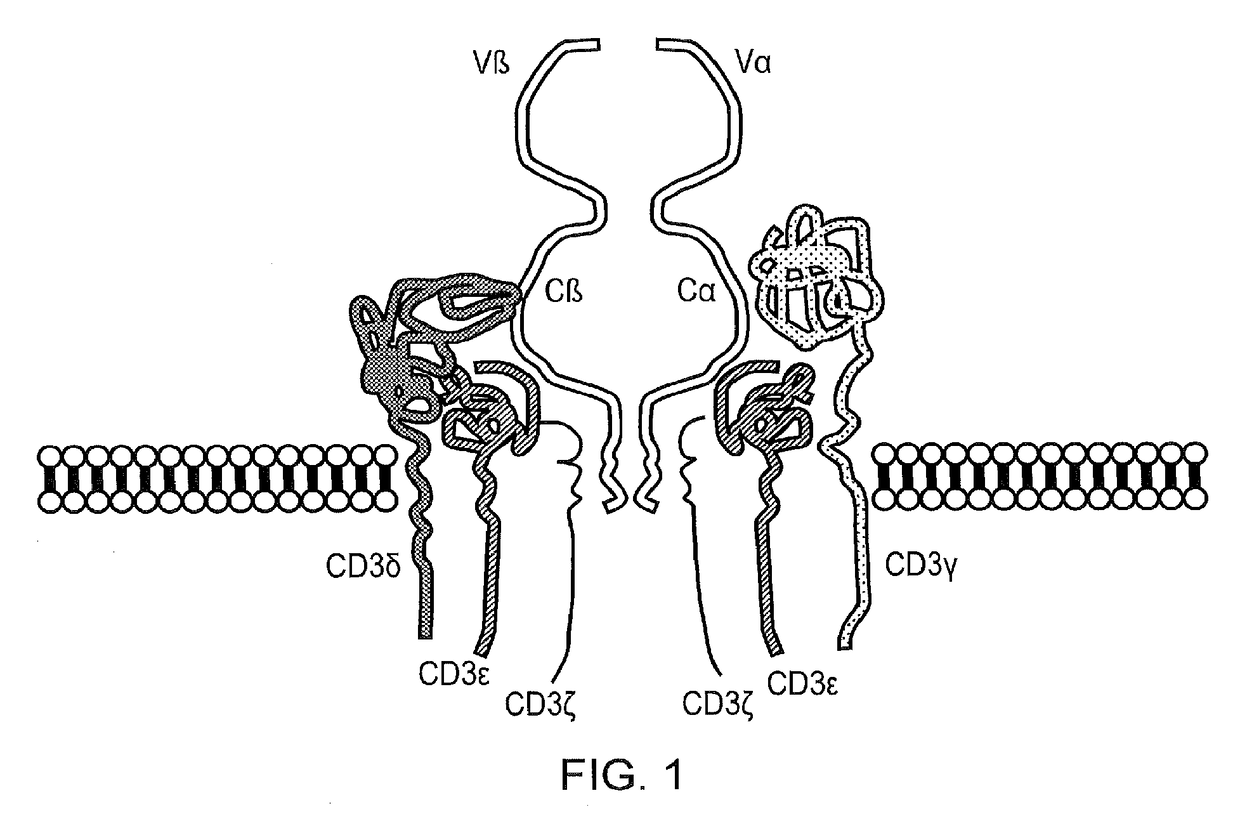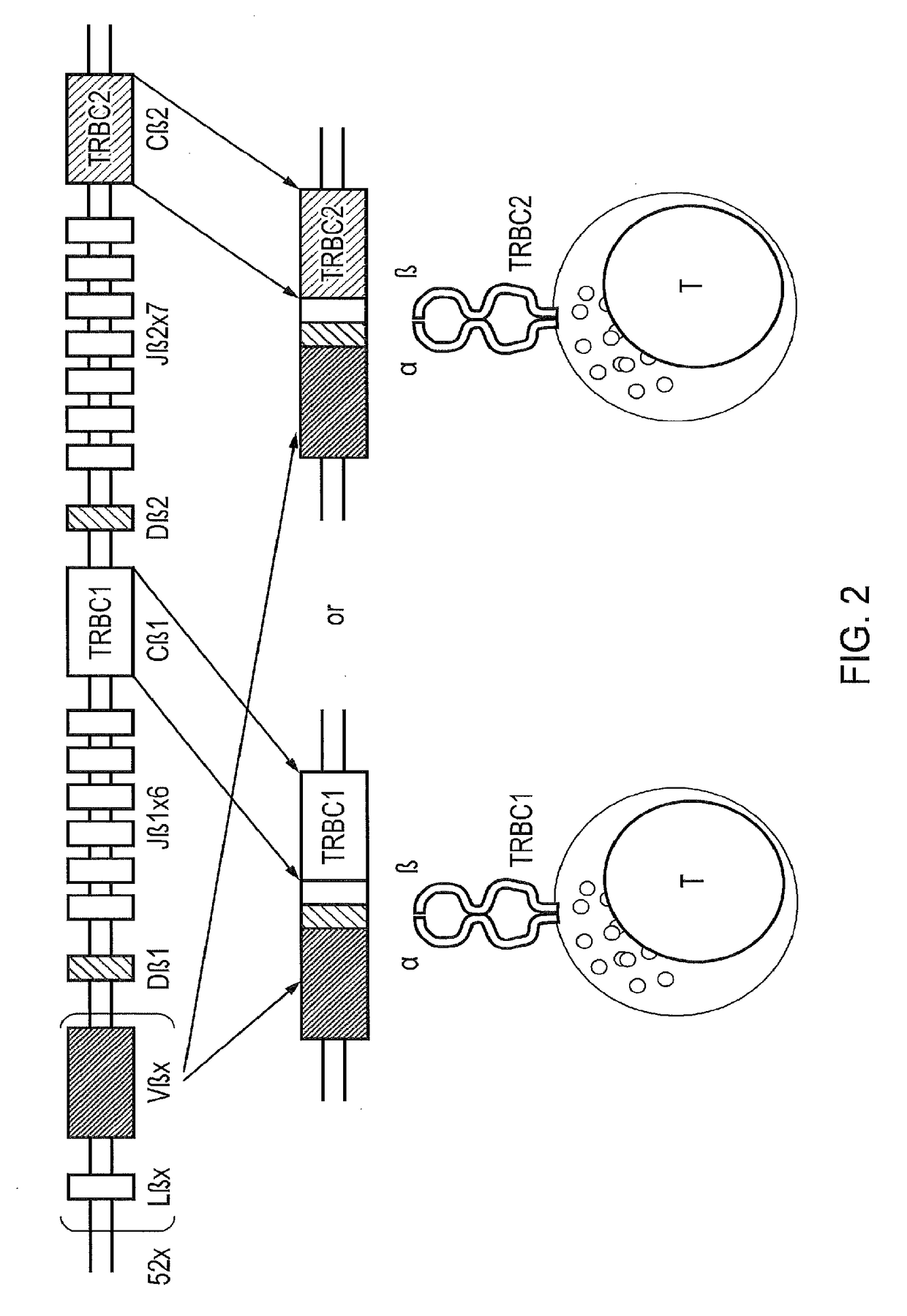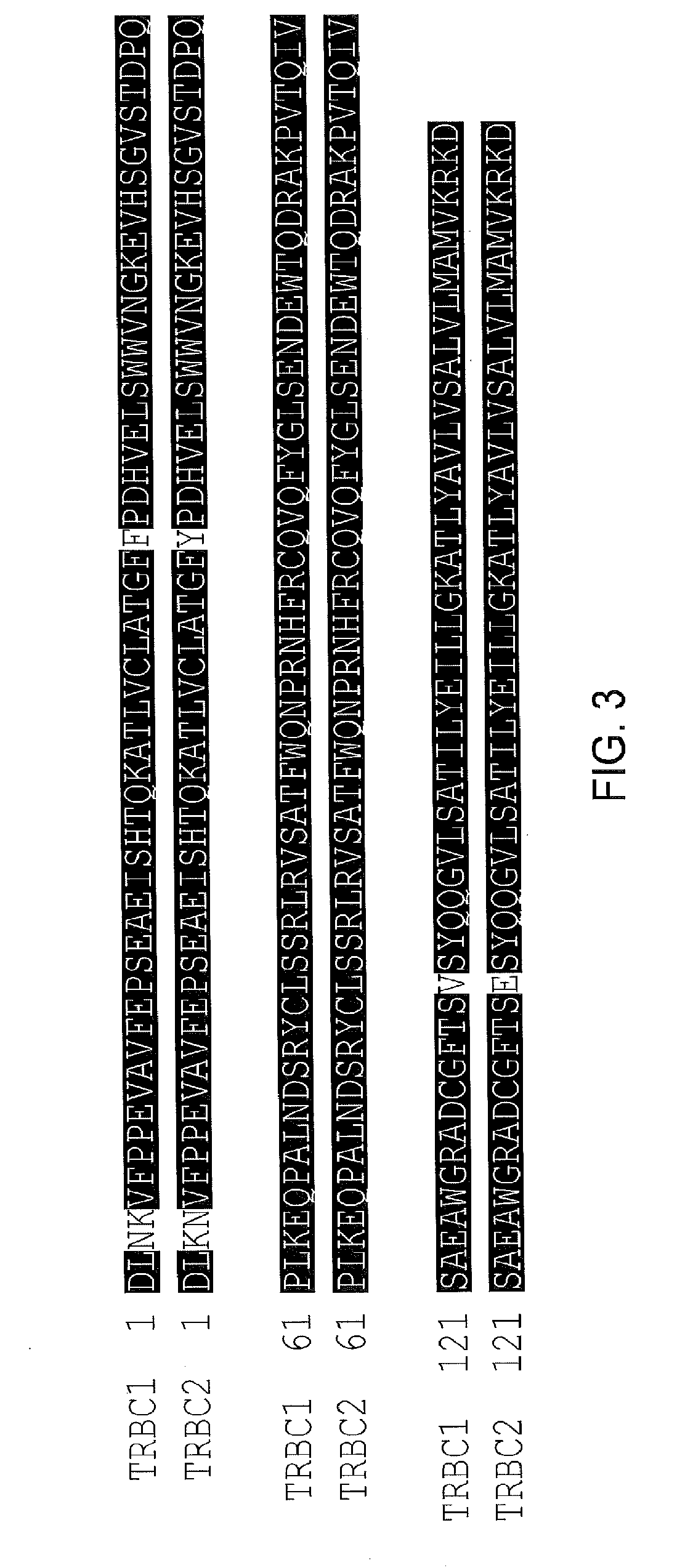Chimeric antigen receptor (CAR) with antigen binding domains to the t cell receptor beta constant region
a t cell receptor and car technology, applied in the field of cells and agents, can solve the problems of ineffective chemotherapy alone, less than 30% of patients are cured, no equivalently effective immunotherapy, and currently no equivalently effective treatmen
- Summary
- Abstract
- Description
- Claims
- Application Information
AI Technical Summary
Benefits of technology
Problems solved by technology
Method used
Image
Examples
example 1
ation of TRBC1 and TRBC2-Expressing Cells
[0291]The JOVI-1 antibody has been previously disclosed by Viney et al. (Hybridoma; 1992; 11(6); 701-713) and is available commercially (Abcam, ab5465). The present inventors determined that JOVI-1 is able to discriminate cells based on specific expression of TRBC1 or TRBC2.
[0292]The inventors generated two plasmid vectors supplying the complete variable and constant regions of the TCR, differing only in expression of either TRBC1 or TRBC2. These plasmids were used to generate retroviral supernatant by transient transfection of 293T-cells. This supernatant was used to stably transduce Jurkats TCR-knockout T-cells (a T-ALL cell line with a mutation at the TCR beta chain locus precluding expression of this chain, and thereby the entire surface TCR / CD3 complex). This resulted in the production of cell lines which were identical other than expression of either TRBC1 or TRBC2. Staining of these cell lines revealed full expression of the surface TC...
example 2
nor CD4+ and CD8+ T-Cells Contain Separate TRBC1-Positive and TRBC1-Negative Populations
[0293]The inventors tested the JOVI-1 antibody on primary human T-cells of normal donors. These analyses revealed that all donors had a proportion of both CD4+ and CD8+ T cells which expressed TRBC1 and a proportion of each which did not. Approximately 20-50% of normal CD4+ and CD8+ T-cells are TRBC1+ve (FIGS. 6 and 7).
example 3
nes Expressing TCR are TRBC1 Positive or Negative
[0294]Cell lines are derived from an original clonal tumour population in a patient. Staining of T-cell lines expressing TCR reveals that T-cells express either TRBC1 or TRBC2, confirming this as a marker of clonality. Of three T-cell lines tested, Jurkats cells (known to be TRBC1+) and not HPB-ALL or HD-Mar-2 (known to be TRBC2+) cells stain with JOVI-1, supporting exclusive expression of either TRBC1 or 2 (FIG. 8).
PUM
| Property | Measurement | Unit |
|---|---|---|
| nucleic acid | aaaaa | aaaaa |
| TCR β constant | aaaaa | aaaaa |
| pharmaceutical composition | aaaaa | aaaaa |
Abstract
Description
Claims
Application Information
 Login to View More
Login to View More - R&D
- Intellectual Property
- Life Sciences
- Materials
- Tech Scout
- Unparalleled Data Quality
- Higher Quality Content
- 60% Fewer Hallucinations
Browse by: Latest US Patents, China's latest patents, Technical Efficacy Thesaurus, Application Domain, Technology Topic, Popular Technical Reports.
© 2025 PatSnap. All rights reserved.Legal|Privacy policy|Modern Slavery Act Transparency Statement|Sitemap|About US| Contact US: help@patsnap.com



